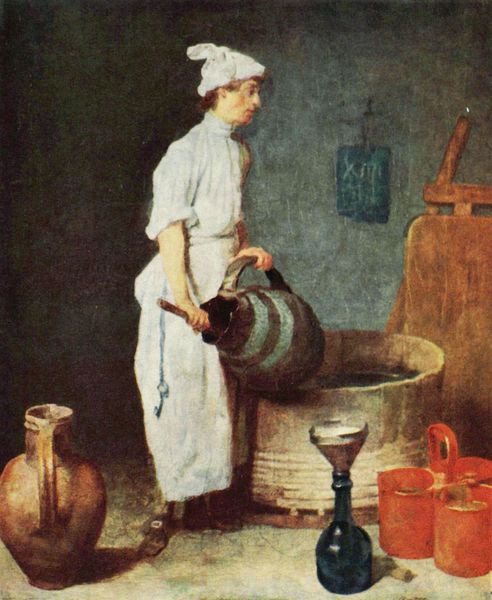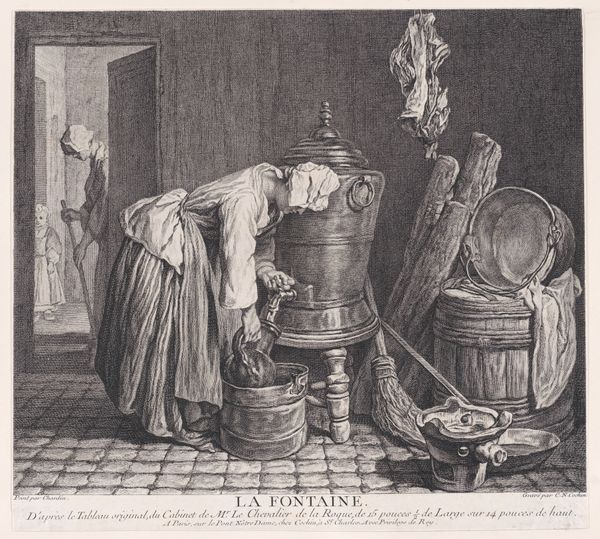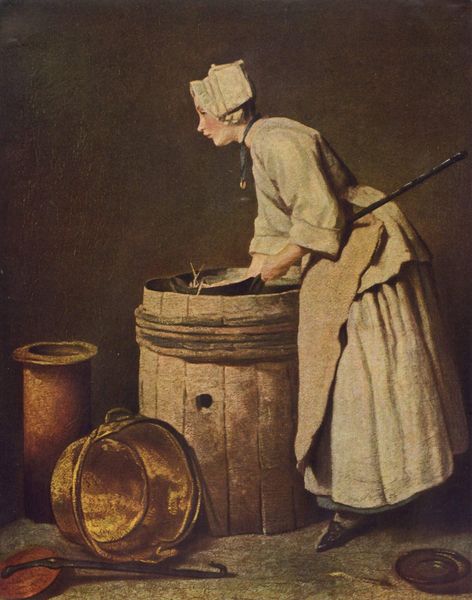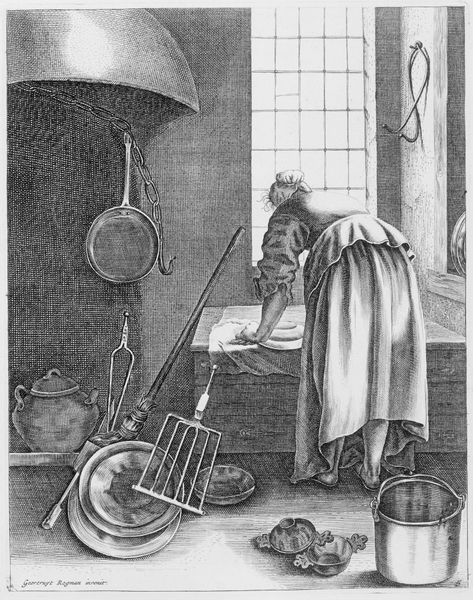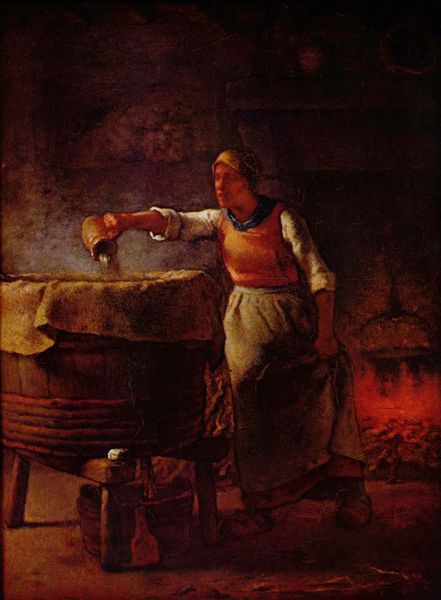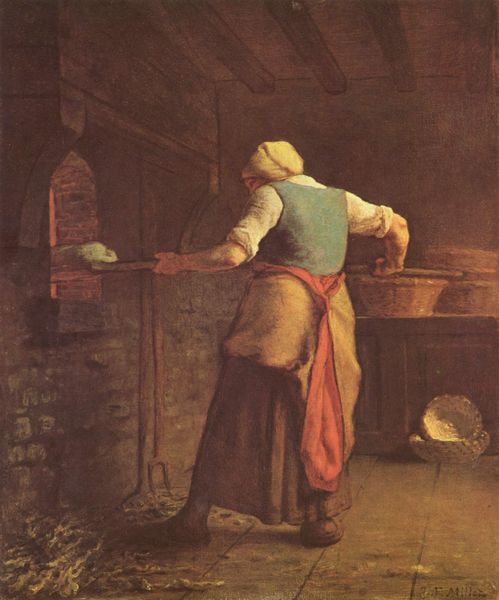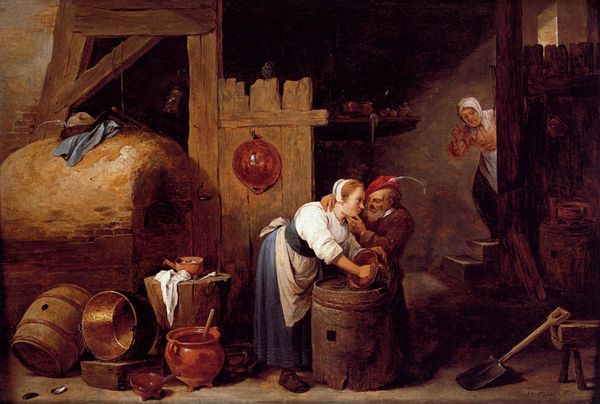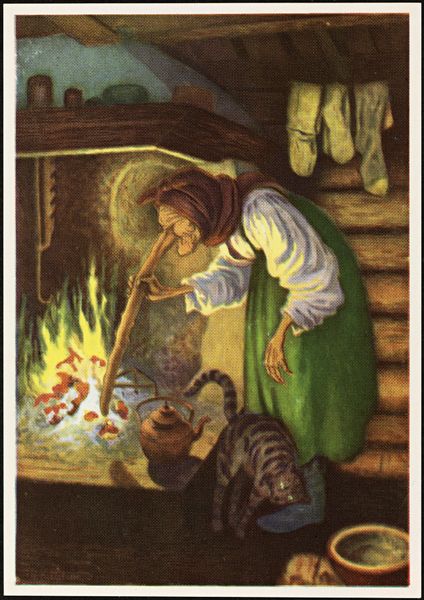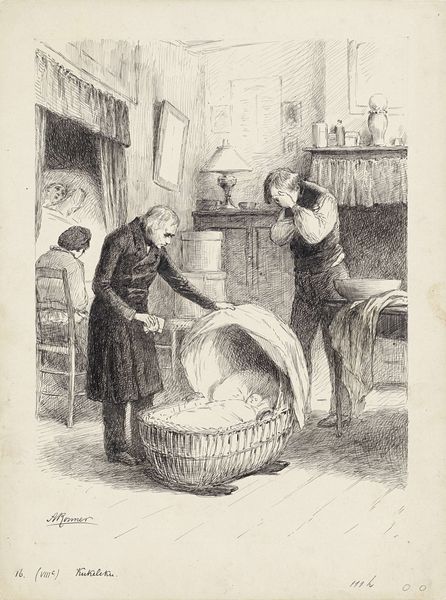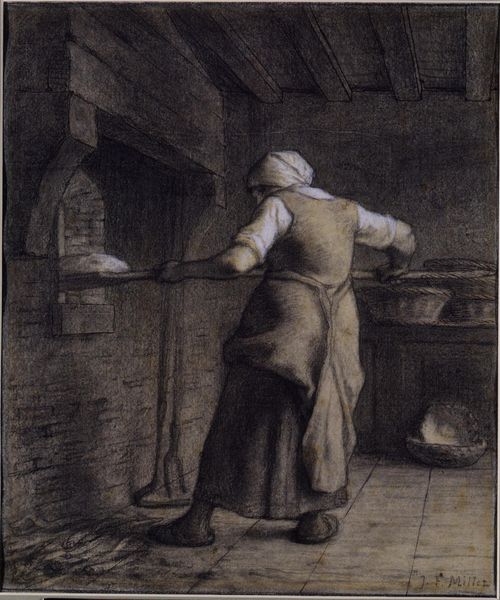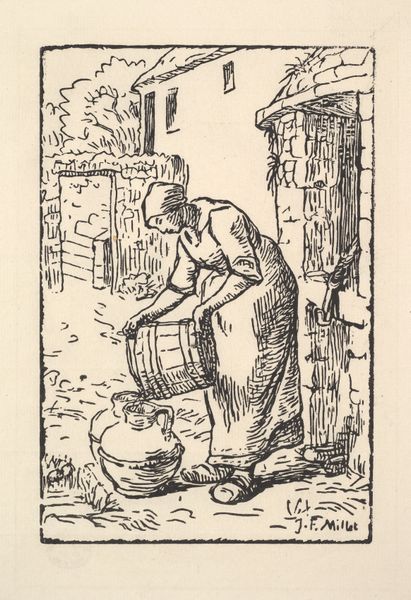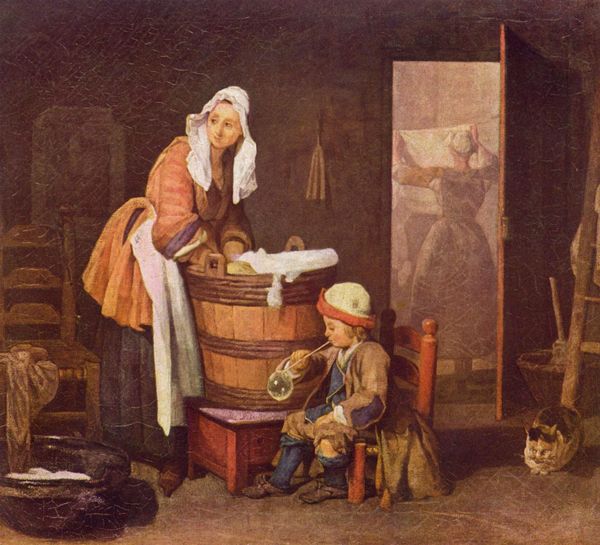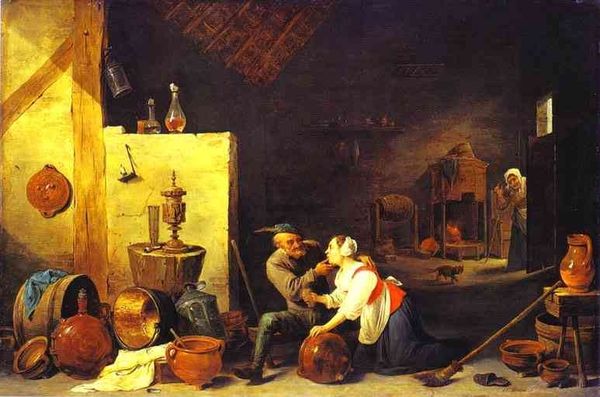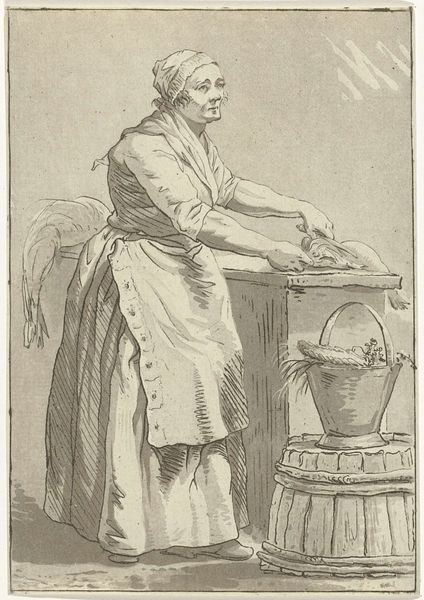
painting, oil-paint
#
baroque
#
painting
#
oil-paint
#
oil painting
#
genre-painting
Dimensions: 42 x 38 cm
Copyright: Public domain
Curator: Ah, yes, Chardin’s "Woman Drawing Water from an Urn," painted in 1733. A beautiful example of his genre scenes. Editor: It feels like a Vermeer that someone left out in the sun too long! So warm, and filled with the mundane grace of domestic life. What do you make of the setting? Curator: The painting presents a woman, likely a domestic worker, engaged in a daily task. Considering the socio-economic realities of 18th-century France, it humanizes labor often rendered invisible. The indirect representation of class dynamics offers a complex dialogue with our modern understanding of domesticity. Editor: Absolutely! It’s almost voyeuristic, but so gentle. The light! It almost romanticizes it, doesn’t it? I wonder what the viewer at the time thought about witnessing such an ordinary moment—water being drawn. Do you think they pondered their privilege or saw a reflection of themselves? Curator: Art historians interpret the painting through the lens of the Enlightenment’s valuing of labor and the ordinary. Some believe it served as a critique of the aristocracy’s detachment from daily life, whereas others claim it normalizes and glorifies labor as a tool for social acceptance. I think it's also a comment on the perceived 'natural' roles of women at the time. Editor: Mmm, the composition really holds it together too, with its humble beauty. Curator: Its realism, use of chiaroscuro, and intimate scale challenge grand history painting as the most important type of art—contributing to a broader discourse on subject matter in art. It also creates space to reassess gender dynamics within these historical structures. Editor: You’re so right. You know, looking at the copper urn and bucket, the dark depths of the room. What this piece captures isn’t just about an image—it’s about feelings. This makes me pause and value small tasks and appreciate the hands that have sustained our societies over centuries. I mean, if art doesn’t offer at least some kind of introspective feeling, what is its purpose? Curator: I agree that Chardin prompts viewers to contemplate not only the woman’s action, but their relation to such labor and its intrinsic value in society, regardless of social hierarchy. It is an extraordinary act of witnessing.
Comments
No comments
Be the first to comment and join the conversation on the ultimate creative platform.
